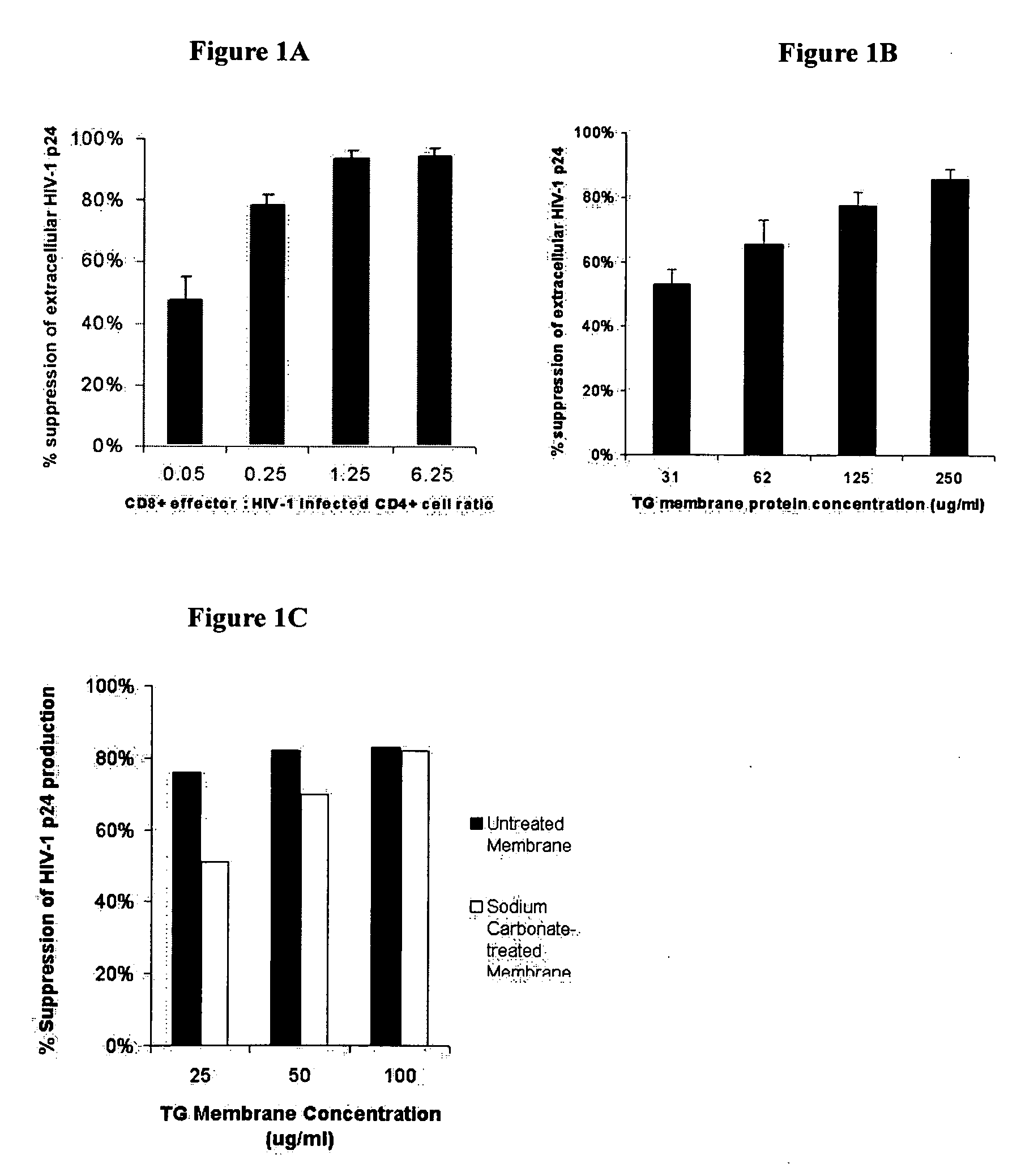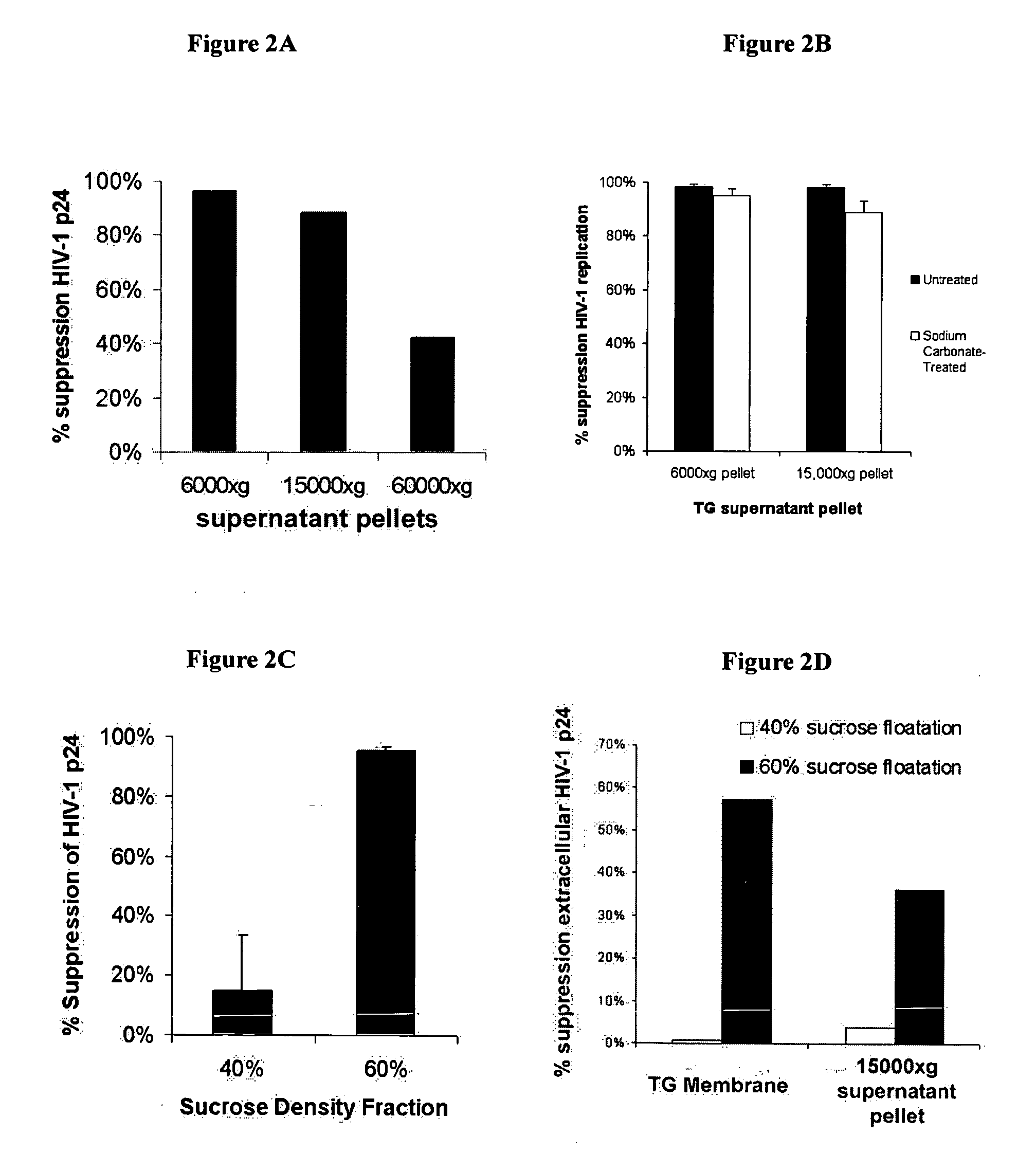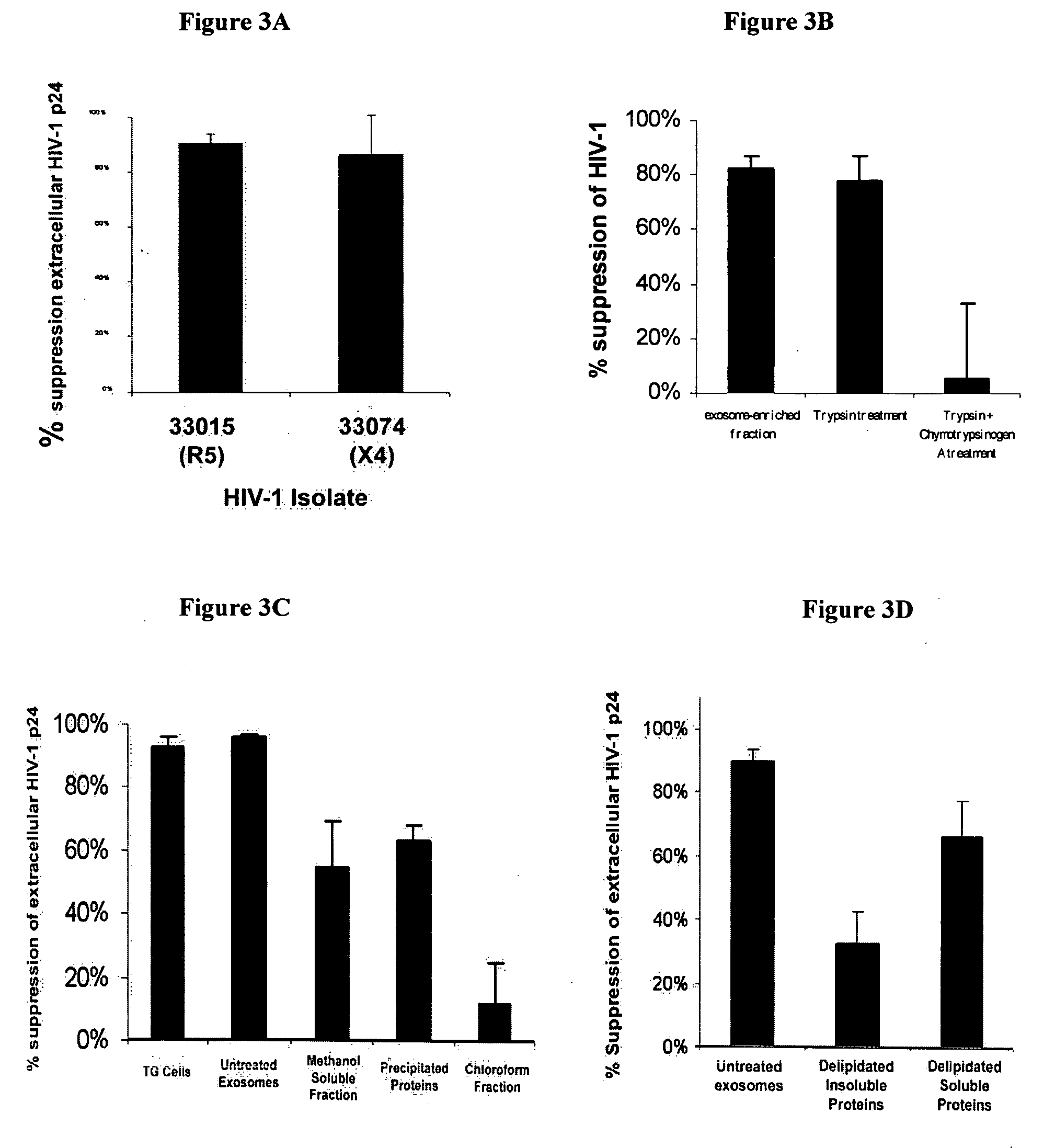Compound and method for suppressing retroviral replication
- Summary
- Abstract
- Description
- Claims
- Application Information
AI Technical Summary
Benefits of technology
Problems solved by technology
Method used
Image
Examples
example 1
[0099] This example demonstrates that exosomes secrete an HIV-1 replication suppressing factor.
[0100] Cell lines and Virus Stocks. The transformation of primary CD8+ T cells with Herpesvirus Saimari (HVS) has been previously described in Chen et al., AIDS Res Hum Retroviruses, 16(2):117-24 (1993). An HVS-transformed CD8+ T cell clone, TG, was used, which was derived from primary CD8+ T cells purified from the peripheral mononuclear blood cells (PBMC) of an AIDS patient and transformed as previously described in Chen et al., Clin Diagn Lab Immunol., 4(1):4-10 (1997). Primary CD4+ T lymphocytes were selectively enriched as previously described in Chen et al., Clin Diagn Lab Immunol., 4(1):4-10, (1997), by immunomagnetic bead depletion of CD8+ cells from PBMC donated from an uninfected seronegative donor. Primary CD8+ T cells from two asymptomatic HIV-1 infected subjects were obtained through the Multicenter AIDS Cohort Study (MACS) at the University of Pittsburgh. The TZM-b1 cell lin...
example 2
[0125] This example characterizes an LTR suppressing factor and demonstrates a novel technique to identify the factor.
[0126] TG cell cultures, exosome preparations, and the acute LTR suppression assay using the TZM-b1 gene-reporter cell line are used in this example as described in Example 1, with some minor modifications where noted. In addition, the TZM-b1 assay that was used throughout as this gene-reporter assay has been proven to be a very sensitive and reproducible assay for the evaluation of biochemically extracted samples mediating LTR promoter inhibition (Tumne and Gupta, Unpublished Data).
[0127] Exosome Preparation. Exosomes were prepared essentially as described in Example 1 by serial centrifugation of cell culture supernatant followed by sucrose gradient fractionation of the 15,000×g membrane pellet. In some experiments, after the final wash and pelleting of exosomes from the 60% sucrose density gradient fraction, exosomes were resuspended 0.1 M Sodium Carbonate instea...
example 3
[0148] This example demonstrates the pH and heat stability of the compound according to one embodiment of the invention.
[0149] An exosome purification was performed from a TG cell culture according to example 2. Three aliquots of exosomes were pelleted by centrifugation and resuspended either in storage buffer (pH 7) for 30 min, in 1 M NaCl solution (pH 7) for 30 min, or in 0.1 M sodium carbonate (pH 11.5) for 30 min, to extract the soluble form of the antiretroviral protein from the exosome membrane. After the extractions, all three samples were dialyzed by centrifugal filtration into storage buffer, adjusted to equivalent volume, and assayed for HIV-1 promoter suppression activity. Equivalent suppression activity was recorded for all three samples indicating the complete stability of the antiretroviral protein at pH 11.5 (FIG. 25)
[0150] In another study, aliquots of the water extraction were made. Various pH solutions of 0.1% trifluoroacetic acid (TFA) were prepared as set forth...
PUM
| Property | Measurement | Unit |
|---|---|---|
| Fraction | aaaaa | aaaaa |
| Molar density | aaaaa | aaaaa |
| Acidity | aaaaa | aaaaa |
Abstract
Description
Claims
Application Information
 Login to View More
Login to View More - R&D
- Intellectual Property
- Life Sciences
- Materials
- Tech Scout
- Unparalleled Data Quality
- Higher Quality Content
- 60% Fewer Hallucinations
Browse by: Latest US Patents, China's latest patents, Technical Efficacy Thesaurus, Application Domain, Technology Topic, Popular Technical Reports.
© 2025 PatSnap. All rights reserved.Legal|Privacy policy|Modern Slavery Act Transparency Statement|Sitemap|About US| Contact US: help@patsnap.com



